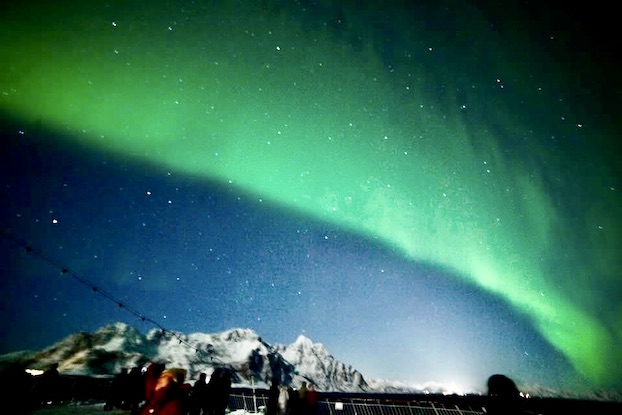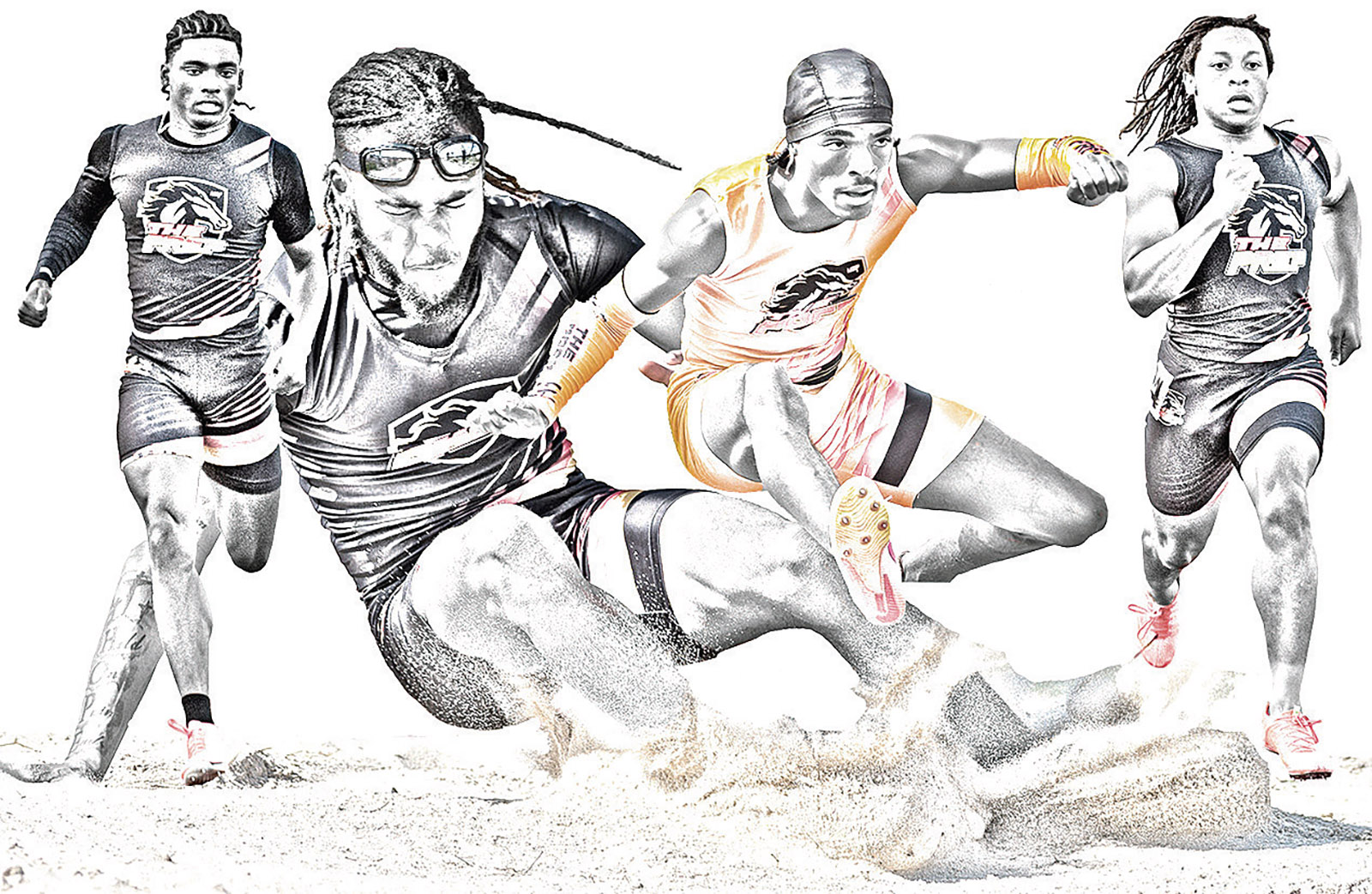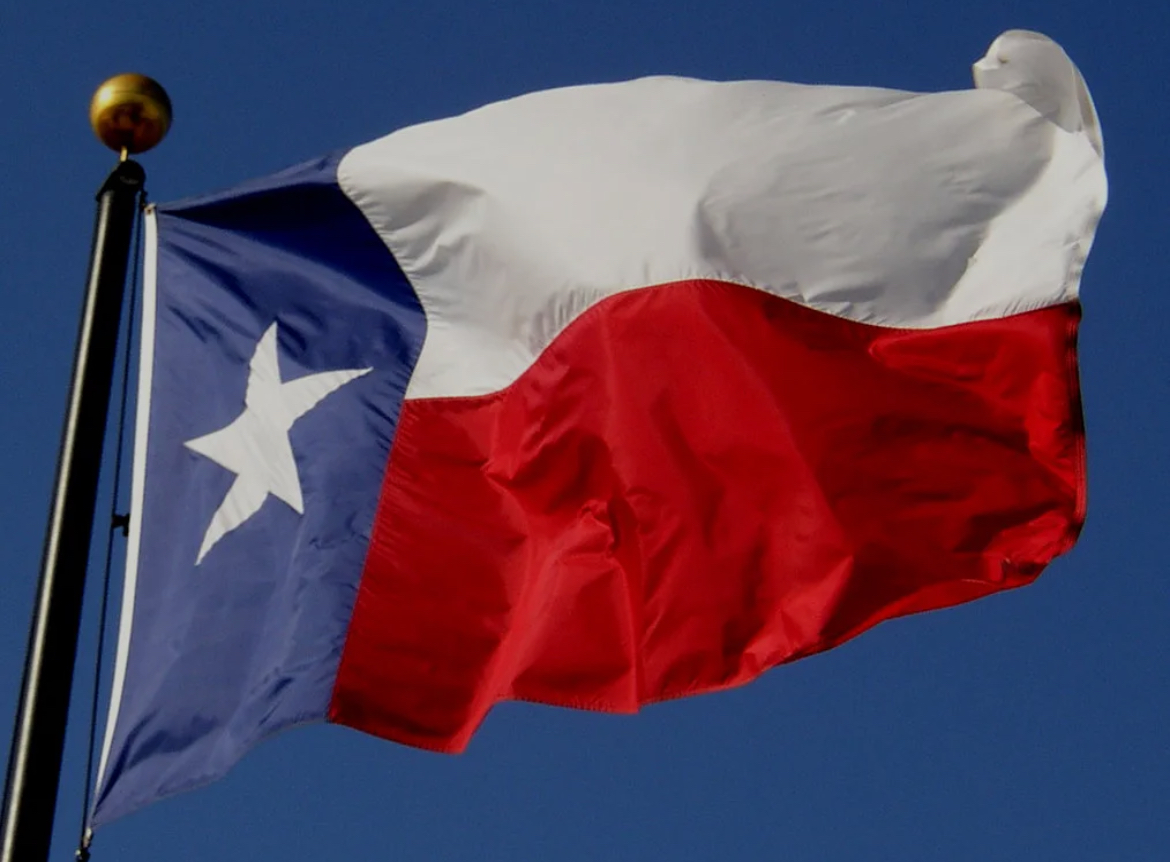Northern Lights, Part Two: A second shot at seeing ‘miracle in the heavens’
Published 12:52 pm Sunday, January 26, 2025

- Undulating in the air above the Norwegian waters were green and red shimmering curtains of color, with thousands of stars shining through them. (Joe Richardson / Special to the American Press)
By Mary Richardson
I had finally made peace with the likelihood that I would never ever see the northern lights. Our quest to see the Aurora Borealis began more than a year ago, when my husband, Joe, and I boarded the MS Trollfjord on a Hurtigruten Norway cruise specifically designed to see northern lights. However, Storm Ingunn, the equivalent of a Category 4 hurricane, derailed those plans. The MS Trollfjord hightailed it into the protected harbor at Tromsø, joining Viking and every other large ship in the area, and the cruise was canceled. No northern lights for us.
However, we were given the opportunity for a “do-over.” The previous cruise came with a guarantee of seeing the northern lights. If they didn’t show up, Hurtigruten promised, Hurtigruten would give you another chance. Unfortunately, we hadn’t noticed the small print on the guarantee. So, this time, instead of being on a luxury ship with unlimited alcohol, we were on the MS Midnotsol, a mail ship.
I loved it. The Midnotsol followed the original route established by the Hurtigruten Company 130 years ago to deliver the mail. In 12 days, we were going to 34 ports, some of them in little villages that were cut off from the rest of the world when snow closed the roads. I felt as if I were a part of a storied history. And, although there wasn’t an open bar, there was plenty of great food, and we were warm and cozy in our cabin. Still, I almost gave up on seeing the northern lights.
Our adventure began on Dec. 29 when we boarded the MS Midnatsol in Bergen and headed north. Being able to get off the boat at the various ports was rare, as most of the time we only docked for about 10 minutes, just long enough to drop off the mail and supplies. Plus, most of the stops were in the middle of the night. Our first chance to get off the boat was on Day Two, when we stopped at Ålesund. It was snowing. As I walked around the beautiful, art- nouveau-inspired town, sleet blew onto my face. I thought there was a real possibility that snow would follow us the whole trip and we would miss the northern lights. Again.
Then, on New Year’s Eve, a miracle happened. That morning, we docked in Trondheim and I went for a coastal walk along the fjord with others from the cruise. The sky was deep blue. The deep, untouched snow was pure powder and blindingly white where it had mounded on the trees. My group of hikers tried to find words to describe the beauty and failed. “Disney,” “Hallmark,” and “winter wonderland” just didn’t measure up. I realized that, if we never saw the northern lights, I didn’t care. This beauty was enough for me.
But that wasn’t the miracle.
I stayed out until the very last minute, then boarded the boat and we headed north. The sun had set about 2 p.m., so it was pitch black when we reached the tiny coastal village of Bessaker, population 200. The captain announced on the loudspeaker that the people of Bessaker had prepared a New Year’s Eve celebration for us; we should all go out on deck to greet them. Almost everyone in the village was standing on the dock, holding lanterns, waving Norwegian flags, and cheering. Then they sent fireworks into the air. I suppose it wasn’t much compared to “big city” fireworks, yet it was the most heartfelt New Year’s Eve celebration of my life.
But that wasn’t the miracle.
Dinner that night was a five-course feast. We started with King Crab, went on to Norwegian lobster, reindeer from Finnmark, a platter of local cheeses, and a chocolate terrine paired with blueberry sorbet. It was amazing, but not the miracle.
At midnight, the Captain invited everyone to the deck for a glass of champagne. We bundled up in our boots, jackets, headscarves, gloves and joined him in noisily toasting and cheering the new year. And that’s when someone yelled “Northern Lights!” Undulating in the air above the Norwegian waters were green and red shimmering curtains of color, with thousands of stars shining through them. For a moment, there was dead silence. Awestruck people often don’t have anything to say. We were seeing a miracle in the heavens, and it was ushering us into 2025. We stayed outside for another hour — freezing, yet unable to tear ourselves away. In the nights to follow, we saw more northern lights, but none were as awesome as these, our first.
Throughout the voyage, we had been losing the sun. When we started in Bergen (60° N), there were a couple hours of daylight. By the time we crossed the Arctic circle (66° N) the sun couldn’t quite make it above the horizon. On Jan. 3, we reached the North Cape (71.1710° N) — the furthest north a vehicle can travel on the European continent. Here, the sun doesn’t rise at all between Nov. 20 and Jan. 22.
The ship moored at the fishing village of Honningsvag, and then we boarded buses to the North Cape. It was about a 45-minute drive on roads that looked like pure snow, indistinguishable from the snowdrifts on either side. But that snow was luminous, seeming to have caught the light from the billions of stars above.
Joe and I walked out to the edge of the promontory. We stared into a dark void, hearing, more than seeing, the waves of the Berents Sea crash into the 1,000-foot cliff below us. Before the awe of that could fully hit us, it started to snow again. The wind drove flakes right into our eyes and it hurt. We retreated to the tourist center with its educational displays, souvenir shop, and lots of warmth. Awe would have to wait; I wanted hot chocolate.
When we got back on the ship, we headed east. Our destination was Kirkenes, 248 miles north of the Arctic Circle and so far east that, if a line were drawn due south, it would hit Istanbul. It was also only seven minutes by car to the Russian border. Memories of World War II are prevalent in Norway. Many of the cities had been heavily bombed, and the rebuilding resulted in towns that often felt new, somewhat industrial, and not historic.
This was certainly true of Kirkenes — a town that hardly anyone has heard of, but which was the second most bombed city in World War II (second only to Valletta on Malta). The Germans occupied it early in 1940, and used it as a staging ground to attack Russia, so the Russians continually bombed Kirkenes to try to dislodge the Germans. In 1944, the Soviet Red Army liberated Kirkenes, and the locals gave them a hero’s welcome. But, by that time, only 13 buildings were standing. The rest were rubble, including the church that gave it its name. There is a museum in Kirkenes that describes the hardships people went through and the rebuilding of the entire town.
Today, while Oslo and Russia may have strained relations, the people in Kirkenes and Russia are close. Street signs are in both Norwegian and Russian, and the border is effectively open for local people. But the staff of Hurtigruten was diligent in relating Kirkenes’ suffering. Both Joe and I went on adventures here — Joe visited the bizarrely beautiful Snow Hotel and I went dog sledding — and without knowing the history, we may have looked at this part of Norway as just a snowy playground.
The ship headed south. At midnight on Feb. 1, we docked at Tromsø. Joe and I felt we knew this town: our first ship, the MS Trollsfjord, hightailed it to this harbor to escape the hurricane. We had holed up for three days, with the winds howling. This time, we had been invited to a private midnight concert at the Tromsø Cathedral. We left the ship at 12 a.m. under a sky bright with stars; the air, though frigid, was still. A soprano, flutist, and organist performed classic Norwegian folk music for us. They ended with Auld Lange Syne, and I heard my fellow concertgoers gulp with emotion, suppressing tears. We walked back at 1 a.m. through a town still bright with Christmas lights, defying the darkness.
Our days of seeing fjords, mountains and remote islands were almost over. In two days, we would be back in Bergen. Our voyages with Hurtigruten had been very different. On this one, our “re-do,” we saw so much more — partly because the first trip had been canceled on Day Six. But it was also because we were traveling on the historic mail run, which meant we were docking at tiny towns in the heart of Norway. We saw the darkness of winter, and we saw the loom of snow under the stars. We saw the rugged mountains, also shining with white snow, rise dramatically from behind the fishing villages. We witnessed how people kept Christmas lights burning; we were told that many would keep them on until the daylight of March. We met “ordinary” Norwegians taking the MS Midnotsol as a ferry, not as sightseers but just as people trying to get home.
If we had never seen the northern lights, it would have been enough to have experienced these things. But we did see the lights. I saw them shining just after I had completed my first hike in snow shoes. (I think they were saying, “Good job, Mary.”) And we often saw them from the upper deck of the ship, shining in all their lime green and russet red glory, with stars peeking through. There was no doubt; we had seen miracles. It had happened.





